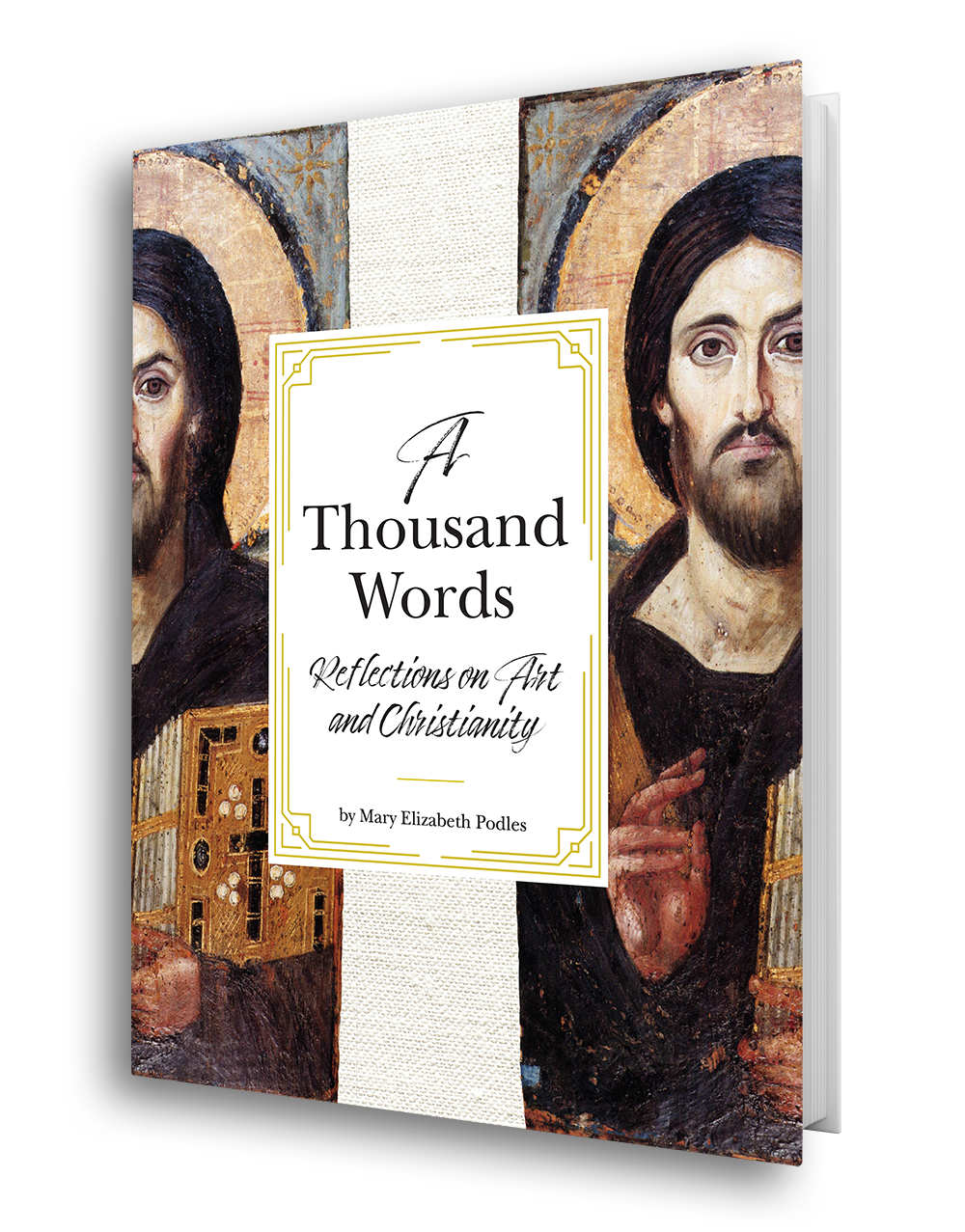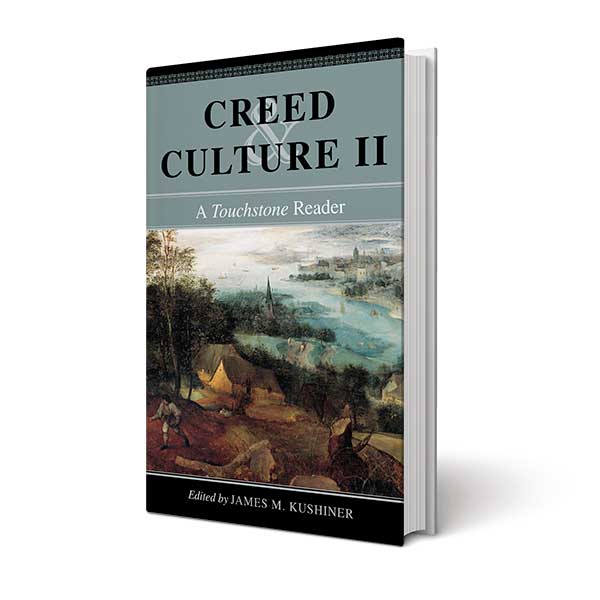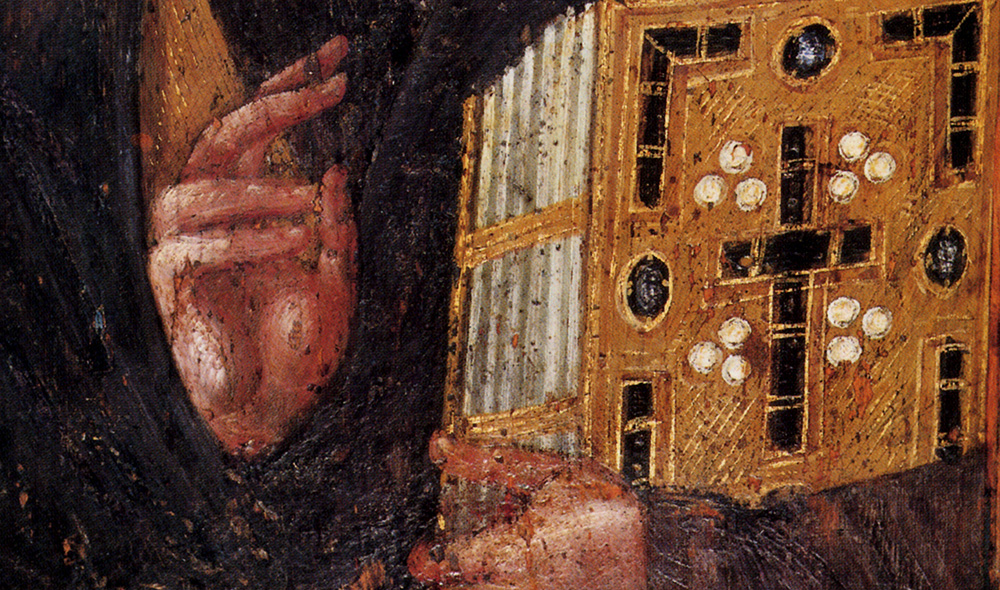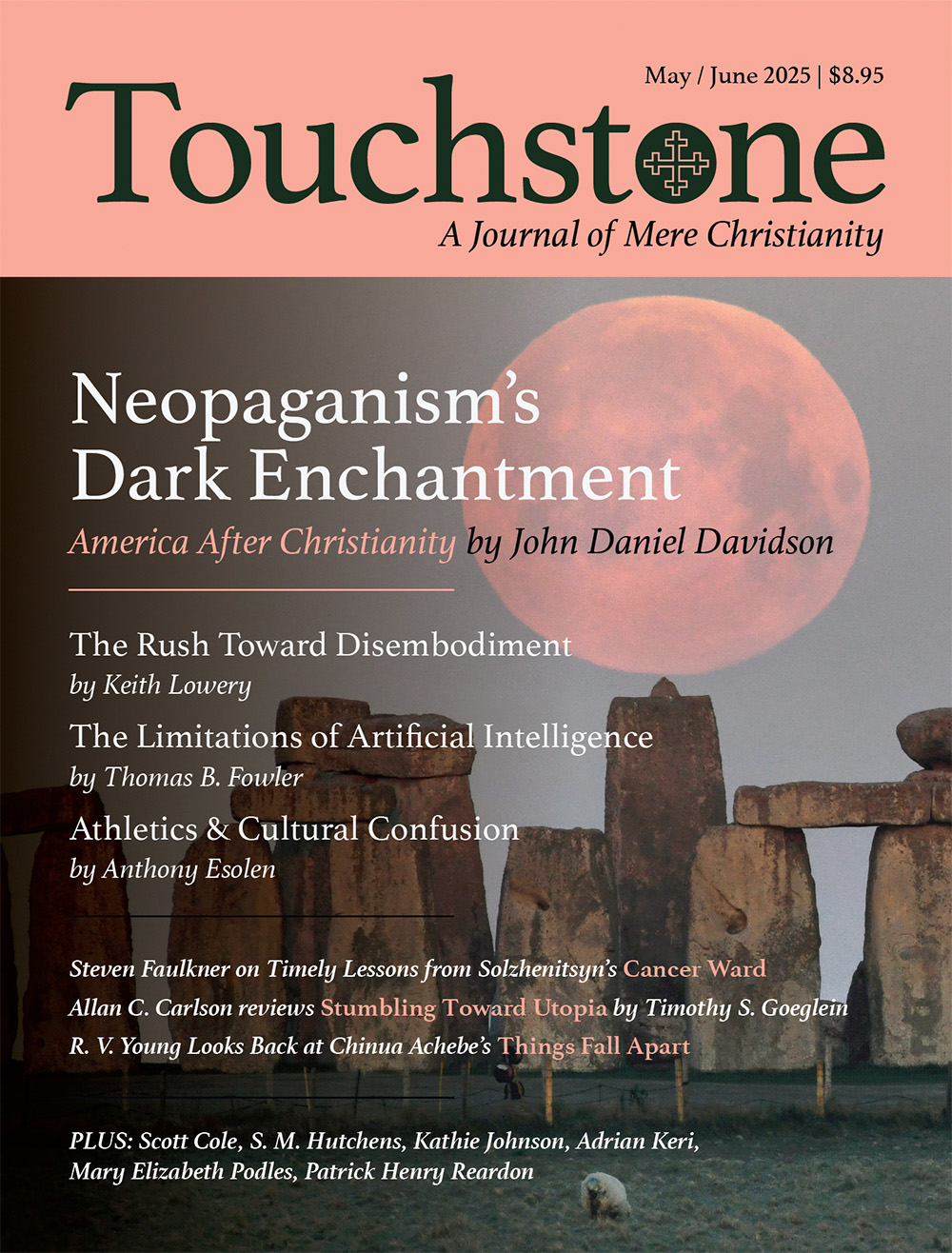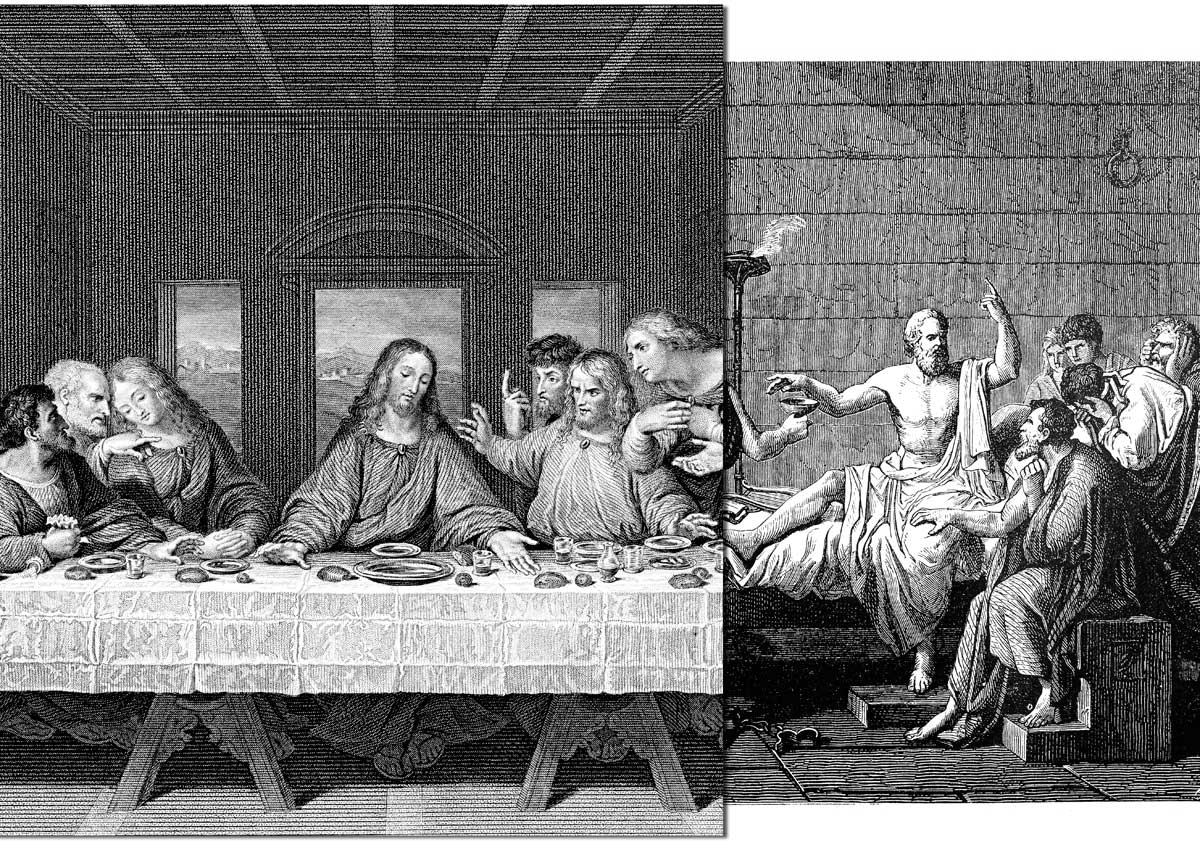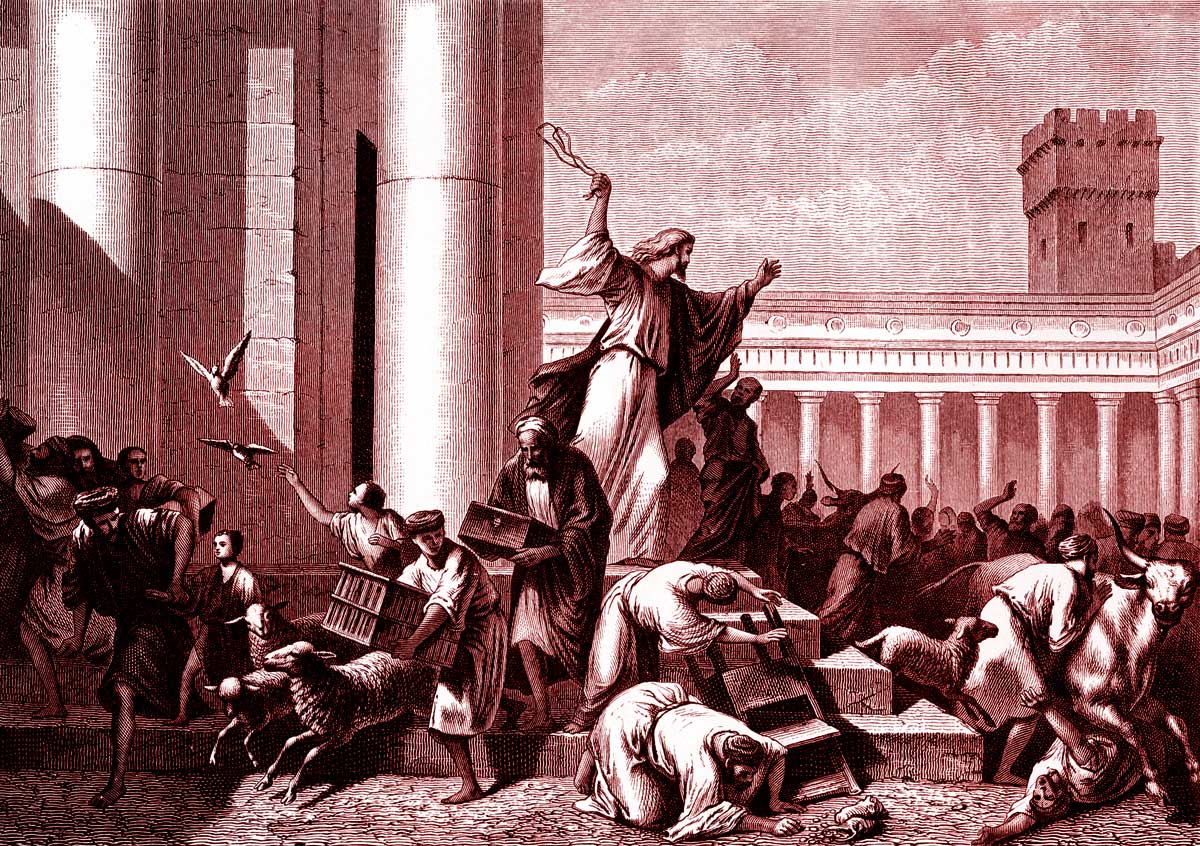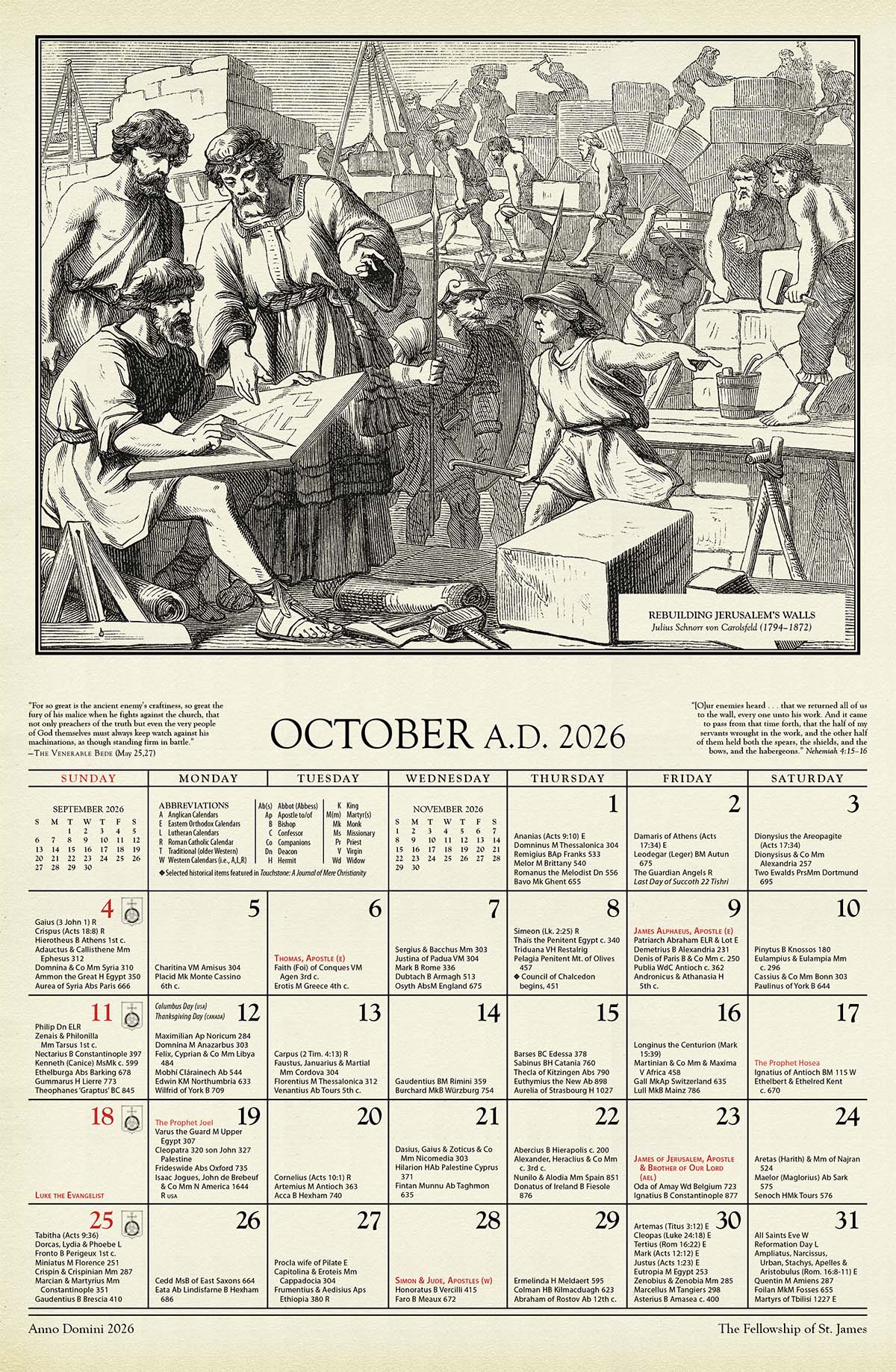Supreme Thinking
Christianity & the Limitations of Artificial Intelligence
Artificial Intelligence (AI) is relentlessly hyped as the next world-changing technological innovation, able to displace myriad jobs and dominate all areas of human thought and activity. In the Touchstone article “AI Demonic” (November/December 2023) Paul Kingsnorth takes this a step further, agonizing over the human-like behavior exhibited by various AI systems, and their seemingly inexorable (and frightening) trajectory. But is there a real demonic force behind AI, one that is sentient and can interact through these machines, as Mr. Kingsnorth avers? Do the machines have human capabilities? If so, it would complete the physicalist view of reality and its associated conviction that knowing is essentially algorithmic, capable of replication with computer-type machinery, thus crowding out faith-based understanding of human beings as unique. Or perhaps this is merely wishful thinking based on a flawed understanding of human knowing and abilities?
Here I turn the tables on the overblown claims for AI by showing that AI is important because the failure of these claims will (1) reveal the limitations of computers and the physicalist view of reality, and consequently (2) bring into high relief the need for and superiority of the Judeo-Christian view of man. Unlike AI, Judaism and Christianity are anchored in reality, both physical and spiritual—as is obvious from the Bible, history, and tradition. Correlatively, they speak the language of truth, because truth and reality are intimately related. Hence, this discussion of AI will center around our ability to perceive reality and know truth, coupled with our ability to think creatively about them, contrasted with AI’s inherent inability to do either. We shall do this with reference to religious art and how we experience it.
The Paradigm of Knowing in AI
Nearly all writings on AI suffer from one debilitating fault: they assume that “artificial intelligence” operates in the same way as human intelligence, and hence the only difference is one of degree. However, to program any sort of “artificial intelligence,” or to have any sort of worthwhile discussion about it, one must have a theory of what “intelligence” and “knowing” mean. AI has chosen the only path open to those who wish to use computers for this purpose: to imitate human knowing in an algorithmic, stimulus-response fashion. At first glance, this “looks like” the way that human knowing unfolds. Utilizing sensors to scan the environment, or chatbots to scan the internet, AI constructs a model narrative. Essentially, AI systems create a digital “map” of the territory and use it to direct actions or responses.
However, dealing with reality is not so simple. Philosopher and scientist Alfred Korzybski observed that the map (narrative) is not the same as the territory. No model can fully replicate reality, or even perceive it as reality rather than a collection of electrically mediated impulses. Humans, on the other hand, perceive the world and things in it as real, in a holistic sense, and interact with them on that basis. This includes, perforce, the ability to recognize other people as human beings and not machines.
The critical question immediately follows: Does the paradigm of knowing used in AI entail limits that reveal the boundaries of AI, no matter how implemented and how fast the hardware? Put another way, Is the paradigm of knowing assumed for AI that of human knowing, or in any way equivalent? The answer to these questions will largely settle the issue of whether AI or any related technology can replace the important functions of human knowing—and thus humans—as opposed to simply enhancing these capabilities. Because humans have the ability to perceive reality, not just “stimuli,” they know how to act in situations they have never experienced, whereas the AI systems do not, and so they must default to some behavior programmed into them.
There is, in other words, a basic creative ability based on perception of reality that cannot be replicated with the AI paradigm. The human paradigm of knowing, therefore, differs in two critically important ways from the AI paradigm: (1) it perceives things as real, transcending any type of algorithmic construction; and (2) it has a creative component that allows it to deal with new situations and propose radically new theories about the world. AI, on the other hand, is always stuck in the past. Human creativity is a highly directed process that works in conjunction with human perception of reality; randomly assembling formulae or statements will never replicate it.
AI is a broad subject, and several major areas of technology fall under its aegis: (1) robots and robotic systems; (2) neural networks and pattern recognition; (3) generative AI, including ChatGPT and similar chatbot applications; (4) symbolic manipulation programs such as Mathematica; (5) autonomous cars and other autonomous systems; and (6) complex, large-scale control programs.
We shall concentrate on (3) and (5), as these are the focus of most of the hype about AI today. The extravagant claims about AI have been roundly criticized on many points, primarily technological; here, we concentrate on two of them.
Performance of Generative AI & Chatbots
Generative AI is the ability of computer-based systems to “generate” human-like text about some subject; chatbots are its current embodiment. The basic algorithm employed is the Large Language Model (LLM), which is based on sifting enormous amounts of data from various sources, usually the internet. The goal is to find patterns in the data and then compose sentences about the topic in question utilizing standard rules of grammar and algorithms for guessing the next word in a sentence. Obviously, many “patterns” can be found in something as vast as the internet, so how well do chatbots work? As Weise and Metz explain in their New York Times article, “When A.I. Chatbots Hallucinate”:
Because the internet is filled with untruthful information, the technology learns to repeat the same untruths. And sometimes the chatbots make things up. They produce new text, combining billions of patterns in unexpected ways. This means even if they learned solely from text that is accurate, they may still generate something that is not. Because these systems learn from more data than humans could ever analyze, even A.I. experts cannot understand why they generate a particular sequence of text at a given moment. And if you ask the same question twice, they can generate different text. (italics added)
Thomas B. Fowler , Sc.D., is president of the Xavier Zubiri Foundation, a technology consultant to the U.S. government, and an Adjunct Professor of Engineering at George Mason University. He is author of four books and 150 articles on philosophy, theology, engineering, mathematics, astronomy, and physics. In today’s environment, he is especially interested in correcting widely promoted but incorrect perceptions of science and its capabilities.
subscription options
Order
Print/Online Subscription
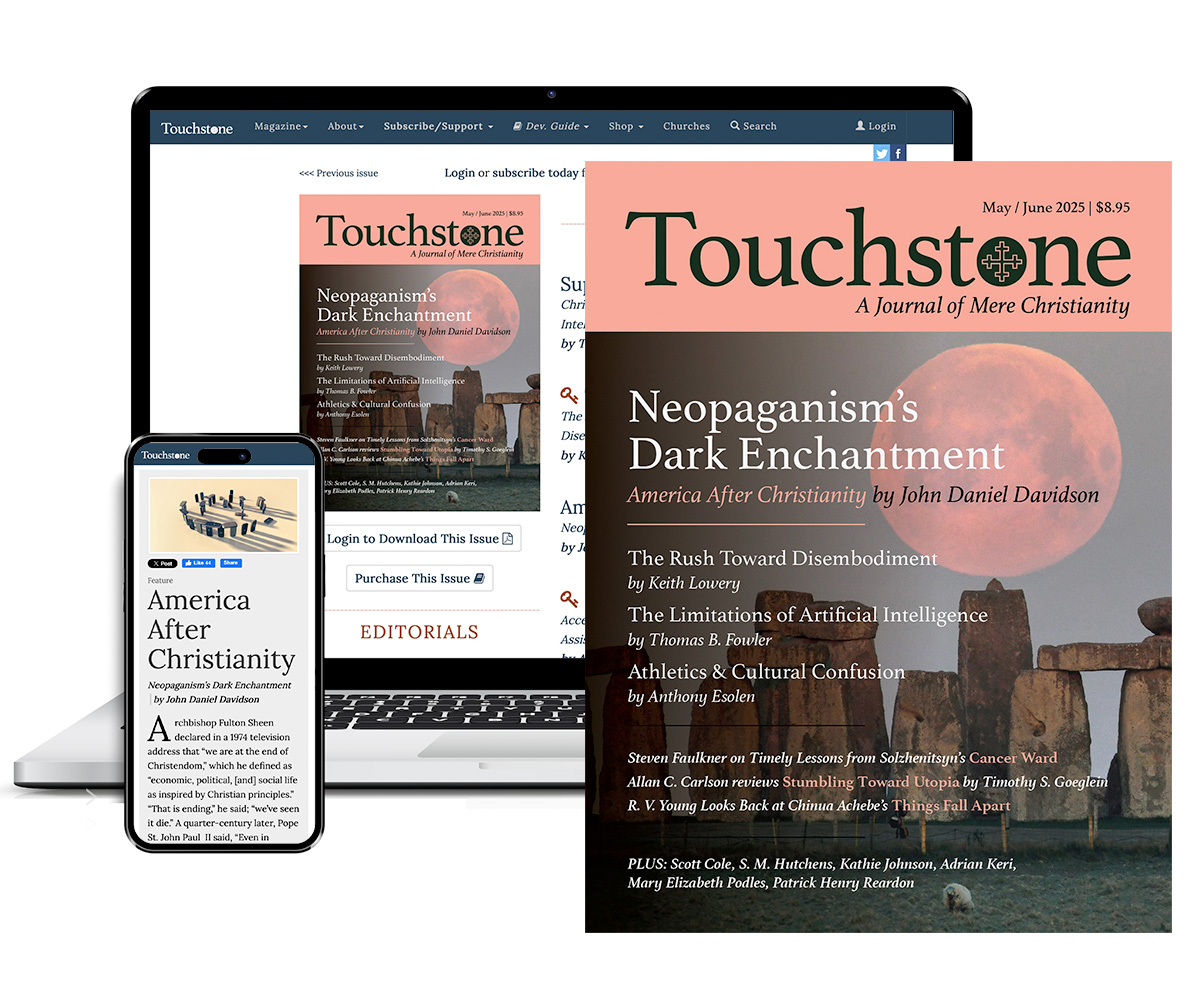
Get six issues (one year) of Touchstone PLUS full online access including pdf downloads for only $39.95. That's only $3.34 per month!
Order
Online Only
Subscription
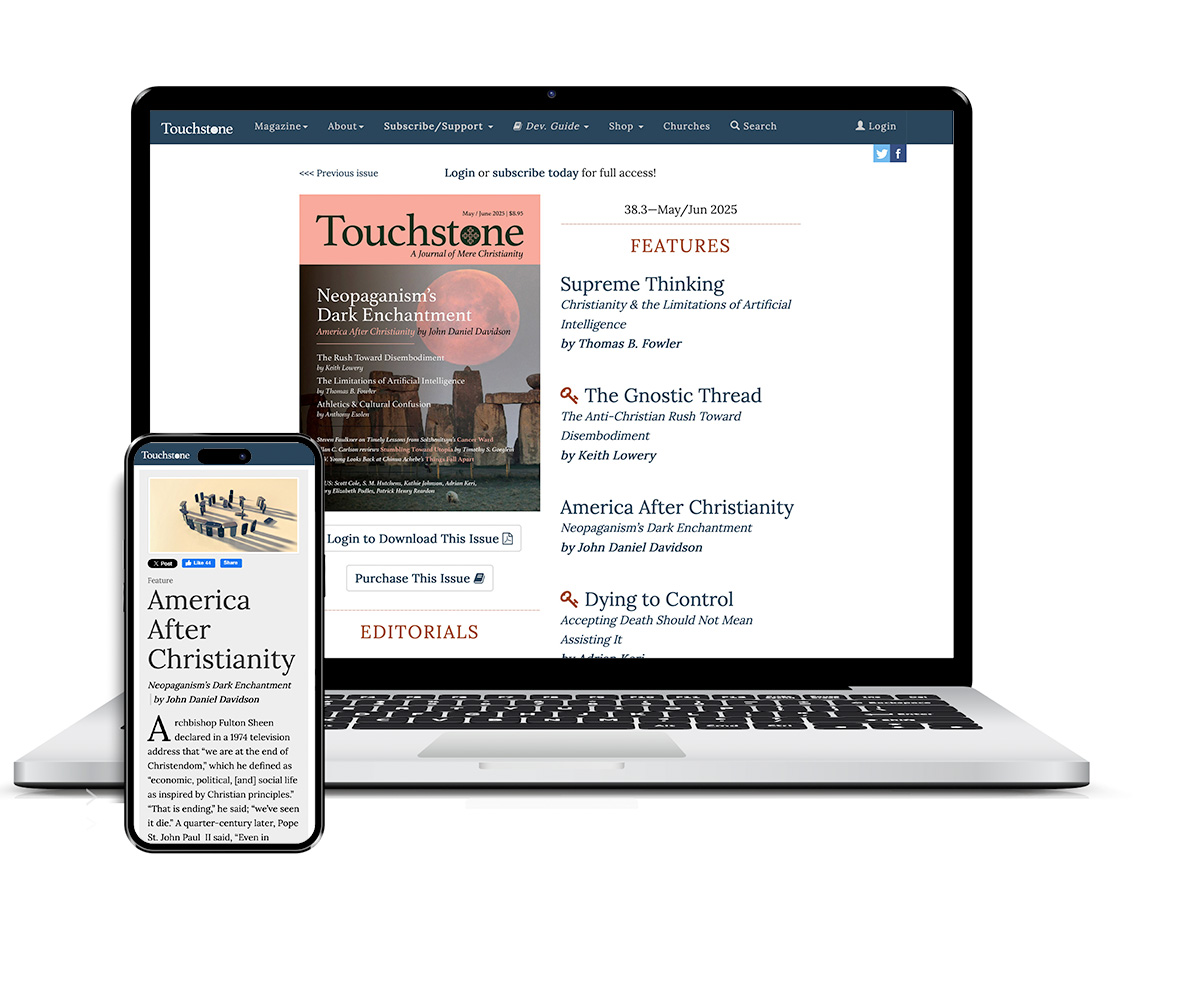
Get a one-year full-access subscription to the Touchstone online archives for only $19.95. That's only $1.66 per month!
bulk subscriptions
Order Touchstone subscriptions in bulk and save $10 per sub! Each subscription includes 6 issues of Touchstone plus full online access to touchstonemag.com—including archives, videos, and pdf downloads of recent issues for only $29.95 each! Great for churches or study groups.
Transactions will be processed on a secure server.
more from the online archives
calling all readers
Please Donate
"There are magazines worth reading but few worth saving . . . Touchstone is just such a magazine."
—Alice von Hildebrand
"Here we do not concede one square millimeter of territory to falsehood, folly, contemporary sentimentality, or fashion. We speak the truth, and let God be our judge. . . . Touchstone is the one committedly Christian conservative journal."
—Anthony Esolen, Touchstone senior editor



